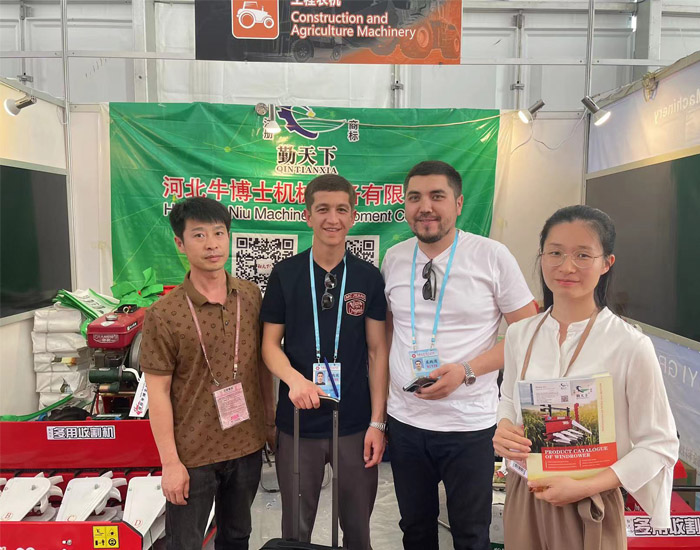Reaper Combiner for Efficient Harvesting and Binding of Crops
The Reaper Binder Machine Revolutionizing Agriculture
Agriculture has been the backbone of civilization since the dawn of humanity, providing food and resources for countless generations. Throughout history, farming techniques have evolved dramatically, leading to increased efficiency and productivity. One of the notable innovations in this evolution has been the development of the reaper binder machine, a groundbreaking invention that transformed the way crops, particularly grains, are harvested.
The Origins of the Reaper Binder Machine
The reaper binder machine can trace its roots back to the early 19th century, a time when agricultural productivity was critically needed due to burgeoning populations and the growing demand for food. Prior to this invention, harvesting was a labor-intensive process that relied heavily on manual laborers using sickles and scythes. This method was not only time-consuming but also physically demanding, leading to inefficiencies and often inadequate harvests.
In this context, the first prototype of the reaper was created by Cyrus McCormick in 1831. McCormick's reaper was a horse-drawn device that allowed farmers to cut grain crops with much greater efficiency than hand methods. The principles of the reaper were further refined, leading to the integration of a binding mechanism that could tie the cut stalks together into bundles, creating what is known today as the reaper binder.
How the Reaper Binder Works
The reaper binder machine operates on simple yet effective mechanics. It typically consists of several key components a cutting platform, a binder mechanism, and a transport system. When the machine is in operation, the cutting platform moves across the field, guided by horses or a tractor. As the cutting blades slice through the grain, the stalks fall into the binder section, where a string or twine securely binds the cut stalks into neat bundles.
This innovation not only sped up the harvesting process but also significantly reduced the amount of manpower required. Farmers could now cover larger areas in a shorter amount of time, allowing them to increase their overall yield and reduce post-harvest losses.
The Impact on Agriculture
reaper binder machine

The introduction of the reaper binder machine had profound effects on agriculture and society. First and foremost, it increased efficiency. Farmers could now harvest more than ten times the amount of grain in the same amount of time it took to do so by hand. This increased efficiency not only improved farmers' productivity but also allowed them to allocate time and resources to other crucial tasks, such as planting and caring for the crops.
Moreover, the reaper binder machine contributed to the larger trend of mechanization in agriculture, paving the way for future innovations and technologies. As the agricultural sector continued to mechanize, the reaper binder became a staple in farming, leading to the establishment of large-scale farms and the decline of smallholder farming in many regions.
The economic implications were also significant. With higher productivity and reduced labor costs, farmers could sell their crops at lower prices, making food more accessible to broader populations. This shift contributed to the expansion of cities as people moved away from rural areas, forever changing the social fabric of societies.
Modern Developments and Sustainability
Today, the principles behind the reaper binder machine have evolved even further with advancements in technology. Modern combines, which incorporate harvesting, threshing, and cleaning into one machine, are a direct descendant of the reaper binder. These machines are now equipped with GPS technology, enabling precision farming practices that increase efficiency and sustainability.
The focus on sustainable agriculture is more prominent now than ever, and modern harvesting machines play a crucial role in minimizing waste and optimizing resource use. Efficient harvesting ensures that more crops can be harvested without excess waste, addressing food security in an increasingly populated world.
Conclusion
In summary, the reaper binder machine stands as a milestone in agricultural technology, marking the transition from labor-intensive practices to mechanized farming. Its impact on productivity, economic development, and societal structure is undeniable. As technology continues to advance, the legacy of the reaper binder machine lives on, reminding us of the ongoing evolution of agriculture and the importance of innovation in addressing the challenges of feeding a growing global population. The journey from the manual scythe to modern combines is a testament to human ingenuity and the unyielding efforts to improve the efficiency and sustainability of food production.
Latest news
-
When to Upgrade Your Old Forage HarvesterNewsJun.05,2025
-
One Forage Harvester for All Your NeedsNewsJun.05,2025
-
Mastering the Grass Reaper MachineNewsJun.05,2025
-
How Small Farms Make Full Use of Wheat ReaperNewsJun.05,2025
-
Harvesting Wheat the Easy Way: Use a Mini Tractor ReaperNewsJun.05,2025
-
Growing Demand for the Mini Tractor Reaper in AsiaNewsJun.05,2025
